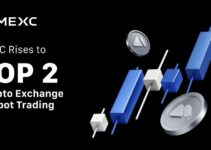Ether dips beneath $3,100 amid ETF withdrawals
Ether (ETH) traded below the $3,100 mark, prompting renewed attention on investor flows into and out of spot ether exchange-traded funds (ETFs). Price weakness in ether coincided with data showing net redemptions from spot ETH ETFs over recent weeks, a trend some market observers interpret as a sign of weakening conviction among longer-term holders.

Investment research from industry participants indicates that, over a recent five-week span, spot ether ETFs experienced net outflows equal to roughly 7% of their cost-basis capital. For context, bitcoin-focused spot ETFs registered smaller proportional withdrawals—around 4% of cost-basis capital—over the same period. The gap has drawn commentary suggesting that market participants currently view ether as the comparatively riskier allocation versus bitcoin.
What is cost-basis capital and why it matters
Cost-basis capital refers to the total amount initially invested in a fund, excluding subsequent unrealized gains or losses. Measuring outflows as a share of cost-basis capital helps isolate changes in the foundational capital provided by long-term investors, rather than short-term trading flows influenced by temporary price moves.
- Higher redemptions relative to cost-basis capital can indicate erosion of conviction among established holders.
- Headline inflows and outflows do not always reveal whether committed capital is being withdrawn or if price appreciation is driving new allocations.
- Cost-basis metrics provide a clearer read on whether redemptions reflect tactical repositioning or a deeper shift in investor sentiment.
Why the market may be treating ETH as riskier
There are several reasons investors might view ether as carrying more near-term risk than bitcoin. Some factors are intrinsic to Ethereum and its token economics, while others reflect broader market dynamics in 2025.
Supply and demand considerations
Ethereum’s post-merge tokenomics introduced fee-burning mechanisms that altered supply dynamics, but demand for ETH remains tightly linked to activity on the network—DeFi usage, NFT markets, and Layer-2 adoption. In periods where on-chain activity softens or fee revenue declines, perceived utility-driven demand can appear weaker to investors.
ETF composition and investor behavior
Spot ETH ETFs attract different investor cohorts than long-standing on-chain participants. Institutional and retail ETF holders may be more sensitive to macroeconomic signals and portfolio allocation shifts, which can drive faster and larger redemptions.
Because ether often acts as both a speculative asset and a utility token, ETF-driven flows can magnify price moves when sentiment changes. This dynamic may explain why proportional outflows from ETH ETFs have been larger than those from bitcoin ETFs in the most recent period.
Macro and regulatory backdrop in 2025
Markets in 2025 have continued to evolve in response to monetary policy, inflation trends, and regulatory clarity. Shifts in interest-rate expectations and global liquidity can influence where risk capital allocates across asset classes, including crypto.
Regulatory developments through 2024 and 2025—covering custody practices, ETF approvals, and clearer frameworks for digital assets—have increased institutional participation. Yet enhanced participation also introduces sensitivity to traditional market signals, amplifying flow-driven price moves when macro sentiment changes.
Technical and market structure implications
From a technical standpoint, the break below $3,100 is notable because it represented the first sustained move under that level in a number of sessions. Traders and algorithmic strategies often monitor such thresholds for stop-loss triggers and position adjustments.
- Short-term traders will watch whether $3,100 acts as a magnet or a floor. A failure to reclaim the level could invite further selling toward lower support bands.
- Longer-term investors may focus on fundamentals—network growth, staking yields, and ETF flow recovery—rather than intraday price noise.
- Order-flow dynamics around ETFs can produce outsized volatility on redemption days, especially when flows are concentrated.
Flow data as a forward signal
ETF flow data is an important live indicator. Continued net outflows as a share of cost-basis capital would suggest a sustained weakening of conviction. By contrast, stabilization or inflows could indicate renewed investor confidence and support for prices.
Observing both absolute dollar flows and the proportion relative to the fund’s initial capital base provides a more nuanced gauge of investor psychology.
Strategies for traders and investors
Market participants should calibrate exposures to reflect both the amplified role of ETF flows and the underlying fundamentals of Ethereum.
- Risk management: Tighten position sizing and use explicit stop-loss levels if volatility rises.
- Diversification: Consider allocations across spot, futures, and staking-linked exposure to balance yield and liquidity needs.
- Flow monitoring: Track weekly ETF flow updates and cost-basis metrics to detect shifts in investor conviction early.
- Time horizon alignment: Short-term traders may trade the volatility; longer-term investors should focus on network adoption, upgrades, and macro tailwinds.
Staking and yield considerations
For holders seeking yield, liquid staking products and on-chain staking of ETH provide alternative return streams. However, liquidity constraints and smart contract risk should be evaluated, particularly when price stress increases and liquidations become more likely.
Looking ahead: what to watch in 2025
Several developments will be important for ETH’s trajectory through 2025:
- ETF flow trends: Continued monitoring of net flows relative to cost-basis capital will indicate whether investor conviction is stabilizing or deteriorating.
- Network activity: Trends in DeFi TVL, active addresses, and Layer-2 adoption will inform demand-side outlooks.
- Macro environment: Central bank policy, risk appetite, and liquidity conditions remain key inputs for crypto allocations.
- Regulatory clarity: Any material regulatory updates affecting custody, ETF operations, or token classification can shift institutional demand.
If ETF outflows diminish and on-chain metrics show renewed growth, ether could regain lost ground. Conversely, persistent outflows and slowing network activity would likely prolong price pressure.
Market sentiment versus fundamental value
It is important to distinguish short-term sentiment-driven price swings from longer-term fundamental trends. Cost-basis outflows capture changes in the bedrock capital supporting funds and can quickly alter near-term liquidity. But Ethereum’s long-term value also depends on ongoing developer activity, decentralized application growth, and the evolution of scaling solutions.
Investors should weigh both perspectives when forming exposure decisions in 2025.
Risk disclosure and practical steps
Cryptocurrency markets remain volatile. Past performance is not indicative of future results, and investors should perform their own research and consult professional advisors when needed.
Practical steps for market participants:
- Set clear investment objectives and time horizons.
- Use position sizing rules to limit downside exposure.
- Monitor ETF flow reports and on-chain metrics regularly.
- Consider dollar-cost averaging to mitigate timing risk during heightened volatility.
Conclusion
The recent dip below $3,100 and the proportional ETF outflows measured against cost-basis capital have highlighted a near-term shift in investor sentiment toward ether. Whether this marks a temporary pullback or the start of a more prolonged repricing will depend on ETF flow dynamics, on-chain demand, and macro developments through 2025.
For traders and investors, combining flow analysis with fundamental network indicators and disciplined risk management offers a comprehensive framework to navigate the evolving landscape.
Disclaimer: This post is a compilation of publicly available information.
MEXC does not verify or guarantee the accuracy of third-party content.
Readers should conduct their own research before making any investment or participation decisions.
Join MEXC and Get up to $10,000 Bonus!
Sign Up


